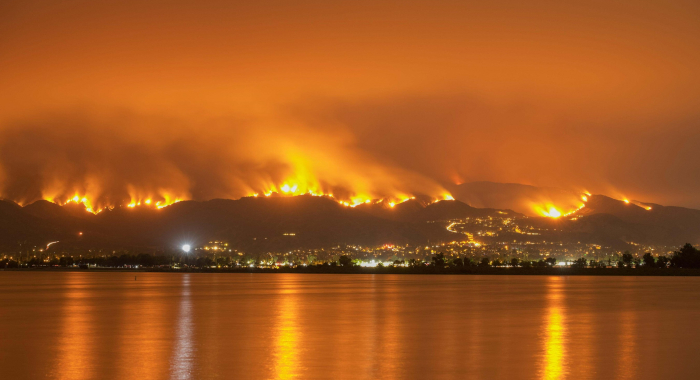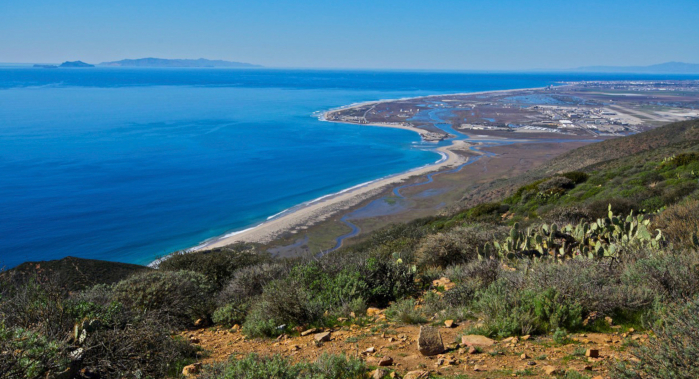Systematic, science-based conservation planning is a hallmark of the Conservancy. For biodiversity to thrive, habitats need to be protected, enhanced, or restored not just in the still wild places on the planet but also where people live and make their livelihoods.
Multi-disciplinary planning can help elucidate where the highest priority places are and what needs to happen there – and inform tradeoffs between conservation and other societal values.


Megan Jennings, Dan Cayan, Julie Kalansky, Amber Pairis, Alexandra Syphard, Rachel Clemesha, Alexander Gershunov, Kristen Guirguis, John Randall, Eric Stein, Sula Vanderplank, Shasta Gaughen
William J. Harford, Natalie A. Dowling, Jeremy D. Prince, Frank Hurd, Lyall Bellquist, Jack Likins, Jono R. Wilson
Among abalone species that were once harvested along the California coastline, red abalone (Haliotis rufescens) supports the remaining recreational fishery. To support development of a red abalone…Sophie S. Parker, Brian S. Cohen, James Moore
This paper discusses changes in the conservation value of lands in the California Mojave Desert caused by renewable energy development that occurred between 2009 and 2016. The authors remotely assess…Randall, J.M., K. McEachern, J. Knapp, P. Power, S. Junak, K. Gill, D. Knapp, M. Guilliams
Rodd Kelsey, Abby Hart, H. Scott Butterfield, Dan Vink
Restoring habitat in retired farmland could reduce water demand and provide ecosystem services for farmers and local communities. In some areas of California, as a result of the Sustainable…Travis M. Hinkelman, Myfanwy Johnston, Joseph E. Merz, Julie Zimmerman
To restore degraded stream corridors and develop large-scale, sustainable watershed conservation strategies, it is essential for managers to consider—in order to ultimately…Walter N. Heady, Brian S. Cohen, Mary G. Gleason, Joshua N. Morris, Sarah G. Newkirk, Kirk R. Klausmeyer, Hilary R. Walecka, Elizabeth Gagneron
Sea level rise presents a new challenge to coastal conservation. The authors quantified and mapped the vulnerability of habitats, imperiled species, and conservation lands to sea level rise throughout…Chris Lortie, Alex Filazzola, Rodd Kelsey, Abigail Hart, Scott Butterfield
Over the past 100 years, California's Central Valley has undergone a massive transformation from desert to a mosaic of farmland and urban development. This transformation has also meant many…Annika T.H. Keeley, David D. Ackerly, Galli Basson, D. Richard Cameron, Lee Hannah, Nicole E. Heller, Patrick R. Huber, Patrick R. Roehrdanz, Carrie A. Schloss, James H. Thorne, Samuel Veloz, Adina M. Merenlender
Alex Leumer, Carrie Schloss, Cara Lacey
Plants and animals lack the ability to change their environment. As their current habitat becomes unsuitable due to climate change, they may search out new, more suitable habitat to adapt to changing…Brian Cohen, Shona Ganguly, Sophie Parker, John Randall, Jill Sourial, and Lara Weatherly of The Nature Conservancy, Land IQ, Natural History Museum Los Angeles County, WRC Consulting Services Inc., Travis Longcore, University of Southern California, Connective Issue, Inc.
As a basic principle of ecological systems, a watershed’s hydrology determines the flow characteristics of its river system. These flows define what the biological characteristics of that…Jill E. Spear, Erik K. Grijalva, Julia S. Michaels, Sophie S. Parker
This paper discusses the impact of urban-dwelling plants and animals on regional wildland populations, both within and across species. The authors reviewed the global conservation literature and…Jeanette K. Howard, Kurt A. Fesenmyer, Theodore E. Grantham, Joshua H. Viers, Peter R. Ode, Peter B. Moyle, Sarah J. Kupferburg, Joseph L. Furnish, Andrew Rehn, Joseph Slusark, Raphael D. Mazor, Nicholas R. Santos, Ryan A. Peek, Amber N. Wright
Freshwater ecosystems are in peril globally. Threats to freshwater biodiversity are numerous and include habitat degradation, pollution, overexploitation, dam construction, species invasion, and…Sophie S. Parker, Jim Moore, Leonard Warren
The 185 mile-long Amargosa River, one of only two rivers with perennial flow in the California portion of the Mojave Desert, is fed by an ancient groundwater aquifer. The river provides habitat for…The Conservancy’s Omniscape tool provides a connectivity roadmap for plants and animals that need to adapt as the climate warms.
Alexander C.A.D., F. Poulsen, D.C.E. Robinson, B.O. Ma , R.A. Luster
Management of the Sacramento River and Sacramento–San Joaquin Delta is one of California’s greatest challenges, requiring trade-offs between valued components that serve a multiplicity of…Seth P. D. Riley, Trish Smith, T. Winston Vickers
Freeways are barriers to wildlife passage and gene exchange. In Southern California, mountain lion movement has been severely restricted due to this infrastructure. As a result, the mountain…Aburto-Oropeza, O., M. Edwards, S. Butterfield, and 93 additional authors
The U.S. and Mexico face many shared ecological changes due to the increased frequency and severity of droughts and rising energy demands; trends that entail economic costs for both nations and…